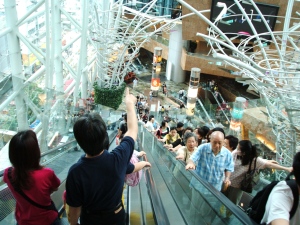
Glass is fundamental to how a building looks from the outside and how it performs from the inside, both in terms of heat loss or gain, and how its characteristics impact on, for example, lighting and HVAC systems. It’s easy to see how glass remains central to the building envelope.
Its advanced characteristics have allowed for building facades that can enhance sun protection, improve thermal comfort, enhance air quality and reduce lighting, cooling and heating costs, an important consideration when it’s estimated that between 3-6% of total energy consumption is lost through windows.
Perhaps the most important innovation over the past 25 years has been glass types able to minimise heat loss while permitting in visible light from the building’s exterior. This low thermal (Low-E) performance minimises the loss of thermal infrared radiation and can impact significantly on heating costs. One estimate suggests that some two-fifths of the glass market for commercial buildings is for Low-E products.
Conversely, modern glass types can reduce solar heat gain, absorbing or reflecting radiation from the Sun while still permitting visible light to enter. Of particular benefit in hot countries, for example in the Middle East, modern glass types can significantly reduce energy usage associated with air conditioning.
Today’s glazing systems have a large and beneficial impact on the indoor climate, regulating both heat loss and heat gain, while still being translucent and allowing for light transfer. However, the next big thing is taking that role of ‘climate moderator’ to the next level, by using the glass to generate energy.
Glass is also offering new and innovative solutions, for example, switchable glass that employs advanced liquid crystal technology, activated by an electric current, to turn translucent glass into an opaque wall, for privacy rooms or to turn an internal glass screen into a projector screen. Other applications will soon create windows that at night will turn fluorescent and capable of lighting interior spaces.
It is also now increasingly being seen as a "green" product, made largely from natural materials that are in abundant supply. Indeed, the "energy balance" between the manufacture of glass products and the C02 footprint of their manufacture are more than paid back during their lifetime, and represent an investment in future energy saving.
Glass and glazing systems are therefore at the forefront of the sustainability agenda, and new levels of functionality are still being developed. However, none of that would have been possible without one major, and evolving, innovation: to develop its capability for strength and resilience. Once single-paned and brittle, modern glass types can be a multi-layered barrier against fire, excessive sound, and protect against ballistic and bomb attack.
Modern glass composites have near-perfect optical quality and can stop a fire for two hours or more, prevent bullets from passing through, and withstand the detonation of a high explosive charge. These, therefore, are the kinds of technologies and processes that today’s glass and glazing systems incorporate, reducing heat loss or gain, providing security, and balancing carbon emission with energy generation. However, the next big thing in glass technology is fast approaching, the new dawn of nanotechnology.
Nor is it the stuff of science fiction. In the glass industry, it has already led to molecular coatings to repel water and dirt and, as nanotechnology further miniturises the very small, will lead to ever more efficient glasses and photovoltaic cells able to generate much larger amounts of electricity, in huge spans of nanotech glass not yet possible.
But nanotechnology isn’t just the future. It was invented in Europe centuries ago. Early medieval glaziers, using molten gold to decorate stained glass were not only making the first sputter coated glasses, they were also producing nanoparticles.
The art of the medieval glazier was, of course, simply to create decoration and encourage religious devotion. However, tiny particles of gold, when energised by the sun, destroy harmful airborne pollutants like volatile organic compounds (VOCs).
In the process, the sunlight’s electromagnetic field interacts with electrons in the gold to create a resonance. This excites the gold nanoparticles that then break the pollutant molecules into relatively harmless carbon dioxide gas.
In looking to the future, glass will continue centre-stage in the buildings of tomorrow, incorporating technologies that are still over the horizon. However, to paraphrase Le Corbusier, the future of architecture is still the future of the window, even if we still don’t know whether glass is more closely related to a dry martini or a skyscraper.

